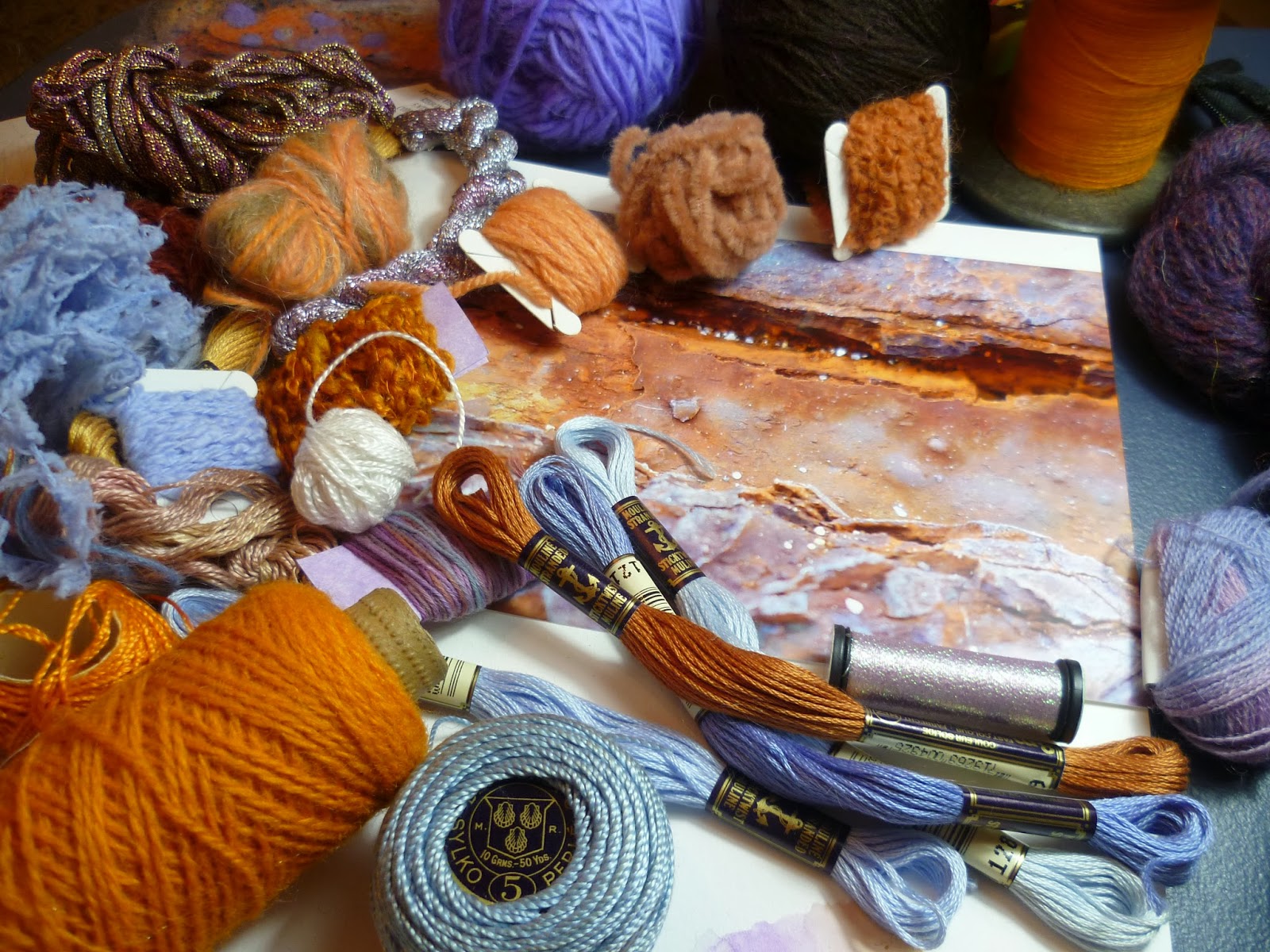For me this exercise was about reviewing my yarn collection rather than making one, as I probably have enough existing yarn and thread to open a shop. My stash has been acquired over many years. Some of it is leftover from craft projects, much has been donated or inherited, some of it I have recycled by cutting old clothes etc into strips. To the amusement of my friends, some I have bought for no better reason than it's unusual or I've liked the colour or texture. It's not a shameful, dusty abandoned collection though, I know exactly what I have and dip into it regularly. Whereas some people see a project they want to do, then buy the materials, I look at what I've got to see how I can use it.
 |
| Large cones and balls of yarn stored by colour |
Storing all this is quite a challenge, especially as a good deal of what I have is not labelled. Through experience, I can usually identify natural fibres by sight and touch. Man-made and fibre mixes are more tricky. I've found, after trying various systems, that what works for me, is grouping my yarns by colour in see-though lidded plastic boxes, in the same way I store my fabrics. Smaller reels or skeins are grouped by type, with the occasional impostor!
 |
| Clockwise from left: Pearl cotton & cotton crochet threads, miscellaneous variegated threads, strings of beads, rayon (viscose) machine embroidery threads, tapestry and space dyed wool, lace reels, more machine embroidery threads. |
 |
| Stranded cotton and metallic polyester embroidery floss |






















